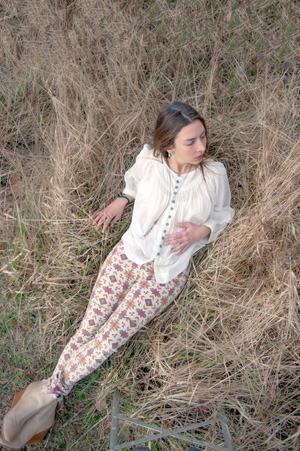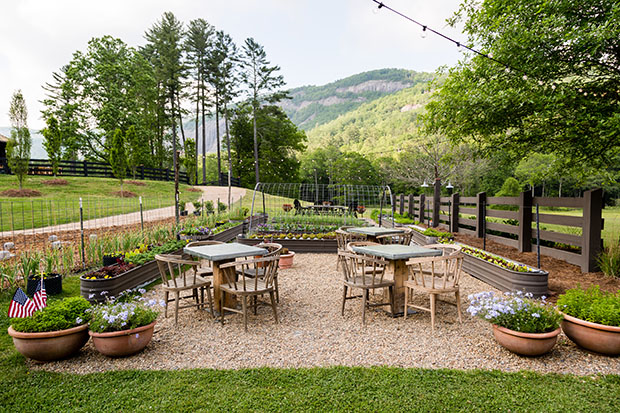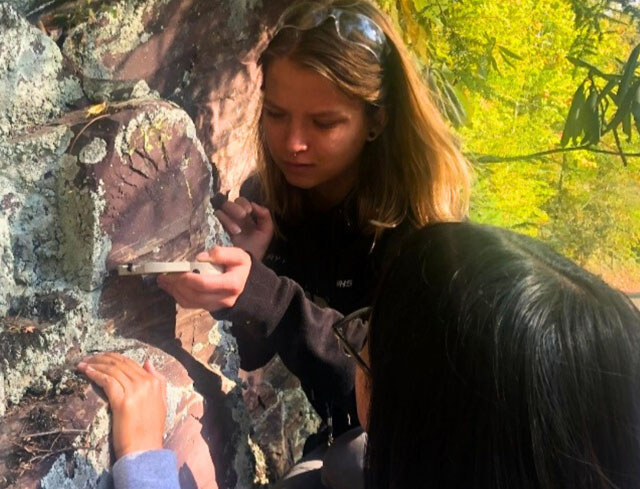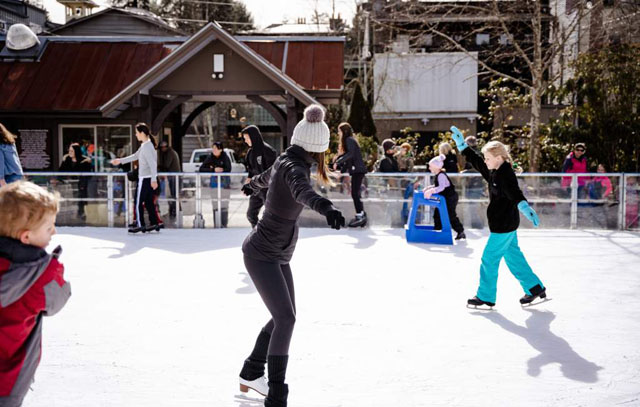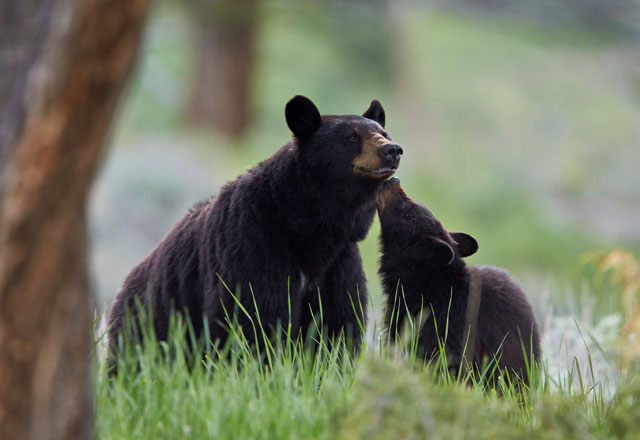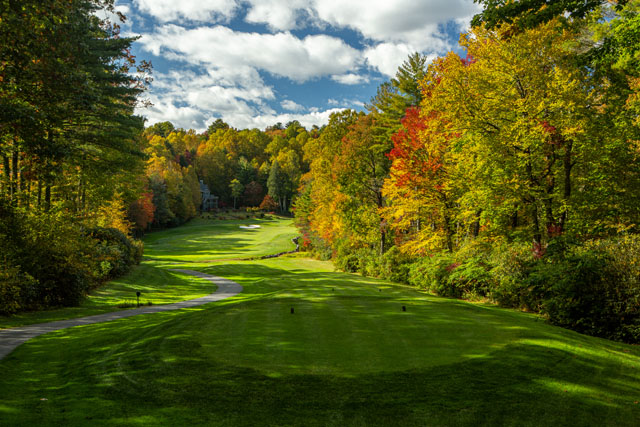Fly-Fishing on the Highlands-Cashiers Plateau
03 Apr 2020
A meditative dance between nature and man
By Andrew Renfro
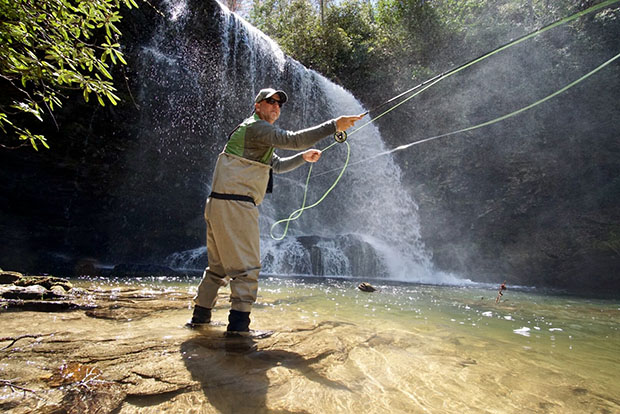
I watched my cousin David cast his fly rod in my front yard as he tried to explain why he was whipping the nine-foot-long pole, featuring thick colorful line, back and forth. There wasn't water anywhere in sight nor was there a hook at the end of the dancing line. David tried to explain what he was doing and why he was doing it, but I still didn't fully understand the sport. Not until later would I feel the wave of cathartic calm that comes from standing in a river for several peaceful hours.
Matt Canter, Partner and General Manager at Brookings Anglers, took David and I on our first guided fly-fishing trip nine years ago. We probably caught 40+ fish on the Tuckasegee River using a variety of flies, including a sculpzilla sculpin streamer; it was a lot of fun. When it comes to casting, Matt says let the rod do the work. "It's the reason why we pay so much for them, slow down and let your equipment do the heavy lifting. It's all about timing and finesse, rhythmic movement instead of physical exertion."
A meditative dance, back and forth, your arm and rod move between ten and two- like a pendulum on a metronome. That is how fly casting was depicted in the 1976 Norman Maclean book and 1992 film, A River Runs Through It, where brothers learn to fly-fish in the early 1900s in rural Montana. Needless to say, technology has progressed since those days, but with all of our advances, really little has changed. Still, it’s fly-fishing. Back and forth, an angler works the line from the reel until the final presentation of the fly to the fish.
There are as many different techniques, styles, methods, gear choices and opinions regarding fly-fishing as there are types of flies to learn to tie. In angling with fly-fishing tackle, the weight of the line is used to cast your artificial fly, as opposed to the monofilament line frequently used in spinning tackle- where the weight of the lure propels the cast. Flies are designed and tied to mimic food sources in the waterways. "Trout eat four basic types of bugs anywhere in the world at different stages: mayflies, stoneflies, caddisflies, and midges. They are opportunistic and will also eat smaller trout and other terrestrial bugs that land in the water,” says David Wilkes, Owner of the Highland Hiker. The goal is to identify what may be hatching and, therefore, what the fish are actively feeding on. It is much easier to "match the hatch" instead of trying to convince a fish to munch on something not currently present in its natural surroundings.
The plateau is a pretty incredible place, a misty temperate rainforest waiting to be explored. I recommend that you follow a trail along some flowing water to begin your experience. The Chattooga River Trail in Whiteside Cove is a great choice. Experts at locating fish, matching the hatch, and ultimately helping you to be a better angler, our local guides are here to help. We have a year-round fishery with many fishable miles of stream! Target species in the local area include; rainbow trout, brown trout, brook trout, smallmouth bass, largemouth bass, muskie and stripper.
Wild trout can be more challenging but very rewarding. From Appalachian gold on a big wily brown, the spectrum of color splashed across a fiery rainbow, or the deep ancestral connection felt standing in the same waters as the small but mighty brook trout, boy, do we have it all. Brook trout are the only native "trout" to the Highlands-Cashiers Plateau. Our brookies belong to the char genus and technically aren't really trout. Pushed down during the last ice age the ancient fish were almost driven to extinction when our mountains were clear cut for logging. Brook trout require high elevations which offer cool, pristine mountain waters to survive and thrive. “Southern Appalachian brook trout are the gems of our mountains [and] do need our help…invasive species, acid rain, and habitat loss can really damage their populations,” says Chris Franzen, Fly-Fishing Guide and Shop Manager of Headwaters Outfitters in Rosman, NC.
On the plateau we have several knowledgeable and passionate outfitters; Brookings Anglers, Headwaters Outfitters, and the Highland Hiker. Visit the shops. Talk to the guides. Book a guided trip. Ask questions, they’re here to help. If you're new to fly-fishing, chances are they can have you casting and catching fish within the day. Even "casting experts" can use a tune-up every once in a while, plus, you'll get to test drive new gear. While at the shop, make sure to pick up some of the staff’s favorite area flies and don’t forget to buy a license.
In the United States, license fees and tax dollars on some sporting equipment benefit statewide wildlife conservation projects. You can also join one of many organizations/groups that are working specifically in our area, including Trout Unlimited, Daybreak Fly Fishing Conservancy or the Plateau Fly Fishing Club. Trout Unlimited has recently identified our region as a key area of focus for conservation projects. Healthier streams with restored and protected ecosystems are good for all. Get connected and get involved; if you do nothing, nothing is going to change.
Fly-fishing can be different things for different people. Even if you don't catch anything, trout sure as heck don't live in ugly places. So, dust off your rod, wet a line, and take someone fishing. Teach them about the sport while showing them the importance of conservation. Watch and read, A River Runs Through It, the classic explores life and what it means to live connected with our natural surroundings. Most importantly, GET OUTSIDE and hopefully catch some fish in the process! It's all about the pursuit of the unattainable and remember #828isgreat.

